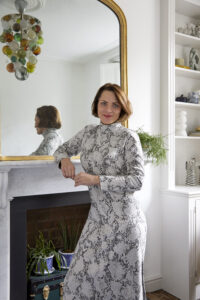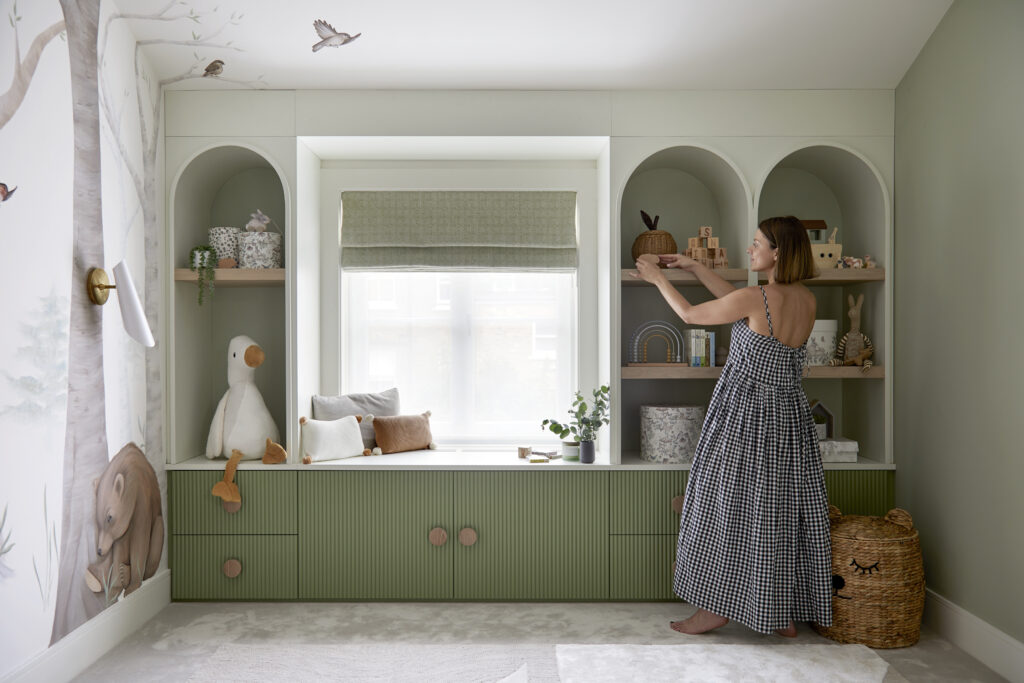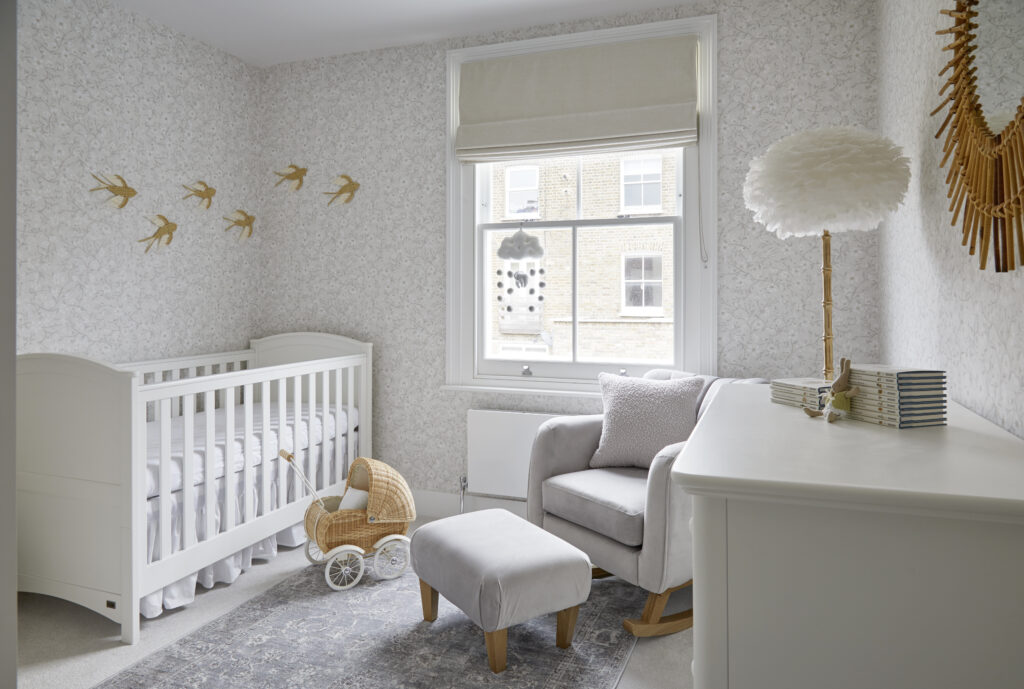Hi, I'm Kira
I’m a lover of the world and far off places who is so excited that you’re here. Looking forward to sharing more of my world with you and all the things I love. I hope this site really does feel like a wellness oasis right here on the internet.
CREATOR. ENTREPRENEUR. ATHLETE.
READ MY STORY
Find a featured business near you to support ⟶
find more blog posts to love
travel
wellness
food
lifestyle
entrepreneurship

I had the pleasure of sitting down with Joanna Landais, Founder of Eklektik Studio after we met through our work with Blue Almonds which is an incredible store with products for young children in South Kensington. We bonded over the store’s focus on sustainability and quality! We’re also both passionate about sharing information we know can help new parents. Joanna is truly an expert and I was excited to learn from her as I worked on my own nursery.
Joanna is an Interior Designer and true Nursery expert! We had a chance to sit down to talk about how first time parents can best choose the ideal room for their nursery. As a first time mom, these tips were too good not to share so Joanna agreed to share her wisdom with us through this guest blog post.
If you’re in London and looking for someone to help you transform your space, Eklektik Studio is one of the best Children’s design studios in town!
How to Choose the Right Room for a Nursery
Designing a nursery isn’t just about beautiful finishes, cute patterns, or soothing visuals. Before the paint swatches, wallpaper samples, or cot options, the most important decision is choosing the right room to begin with. It’s one of those choices that can quietly shape your everyday life as a parent for better or worse. If you are lucky enough to have a substantially sized property or a floor dedicated to your family lifestyle, the answer is probably simple. However, if you live in a busy city such as London or New York, you will know that space is sparse, and typically you have to sacrifice a current spare bedroom or office to welcome a baby into your life. So, it’s important to realize that when it comes to choosing a specific room for a nursery, there are some additional aspects that are worth considering before making a call.
Photo Credit: Anna Stathaki, Photographer
Here are the most important factors Joanna always asks clients to consider when deciding where to set up the nursery:
Proximity to Your Bedroom
In those early months (and sometimes well beyond), you’ll be up at odd hours for feeding, comforting, or just checking if your baby’s still breathing peacefully. Having the nursery close to your bedroom means less stumbling around in the dark, less hallway pacing at 3 a.m., and less disruption overall. For second-time parents, this also helps reduce the chance of disturbing older siblings. A nearby nursery allows you to manage night-time wake-ups quickly and quietly without a full family wake-up call.
Pro tip: If your home layout doesn’t allow a room right next door, think about interim solutions like keeping a bedside cot until night wake-ups reduce or using a baby monitor with a clear audio feed. Don’t underestimate this aspect, and I would always advise you to test the signal before committing to a room because if the signal is not great, it might become a very annoying obstacle to keeping your baby safe.
Safe, Simple Access
It sounds basic, but it’s often overlooked: how easy is it to get to the room, especially at night or when carrying a baby? Avoid rooms that require navigating narrow staircases, multiple levels, or tight corridors. Even a single step down into a room (very common in properties, particularly in London) can become annoying or risky when you’re half-asleep with a baby in your arms.
Look out for:
- Half stairs or sunken rooms
- Doors that swing awkwardly
- Slippery floors or rugs near the doorway
- Long distance from key areas (like your own bedroom or the kitchen)
Consistent Room Temperature
Babies can’t regulate their temperature well, and a room that swings between extremes (too hot in summer, freezing in winter) can disrupt sleep and cause discomfort.
Pay attention to:
- Whether the room has insulation or tends to get draughty
- How direct the sunlight is (especially in south-facing rooms)
- If heating or cooling reaches that room well
Workaround tip: If the perfect room isn’t perfectly insulated, invest in a reliable room thermometer and subtle climate control like blackout blinds, light curtains, fans, or a silent heater with a thermostat. Also, before you take the plan and redecorate an existing room for a nursery, there are some aspects that can be introduced to further control the room temperature. This can be such easy things as laying carpet on the floor. Also, installing an AC wall unit can be a lot simpler than you think and could mean that cooling the room in hot summers is feasible. Often, the AC units can also serve as both a means of heating and cooling the room, and truthfully, wall-hung units are often so much easier to install than many people realize.
Light Control
Babies don’t naturally nap in pitch-black rooms, but you’ll wish they did once you realize how much longer they sleep when light is blocked out. Daytime naps and early summer bedtimes are much easier with good blackout options.
Look at:
- How many windows the room has (and their size)
- If the existing blinds/curtains actually block light
- Whether you’ll need custom window dressings
Don’t underestimate this one; true blackout conditions can be a game-changer. You can always add decorative layers over blackout blinds to keep the look soft and welcoming. If you can consult with the curtain maker, they have many ideas that are not always premium to keep the light out, and these could be fully blackout blinds with a track fitted within the recess of the window. It could also involve lining existing blinds or curtains with extra material that doesn’t let light through, which can be as easy as a simple alteration. Understanding advice from a professional really shouldn’t be underestimated.
Noise Levels
Is the room near the main road, the kitchen, or your home office? Noise doesn’t bother all babies, but for light sleepers, choosing a quieter room can save you months of stress.
Avoid:
- Walls shared with loud rooms (bathroom pipes, washing machines, living areas)
- Rooms directly facing traffic, pubs, or late-night bus routes
- Thin doors or walls with echoey flooring
If you’re tight on space and can’t avoid noise, consider a white noise machine. It won’t fix poor soundproofing, but it can mask disruptive background noise. Also, consider your family lifestyle. If you work from home and take calls or hold conferences in the room next door, you will want to be comfortable speaking freely without worrying about keeping your voice down and waking the baby. Your comfort and the baby’s sleep both have equal importance, so perhaps there is a combination where you can hold your conference call in a separate area further away from both the baby and the family’s busy area.
Flooring Safety & Sound
Floors affect more than just looks. Creaky boards, uneven surfaces, or protruding nails are a nightmare when trying to sneak out after a successful cot transfer.
Think about:
- Whether you need a soft rug to absorb sound (and your footsteps)
- If you’ll be placing furniture that rocks or glides, will it slide too easily?
- Any minor repairs needed before the baby starts crawling
Design tip: Layering soft rugs over wooden floors adds texture and warmth, which is great for a baby’s room and for keeping things quiet. Before you place anything on the floor, make sure that the doors are still able to open and close freely after adding height.
Access to Power and Lighting
From baby monitors to night lights, humidifiers to chargers, you’ll need plugs—and ideally, more than one. Poorly placed sockets can lead to messy extension leads or inconvenient workarounds.
Ask yourself:
- Are there enough sockets for everything?
- Are they positioned in a way that won’t interfere with where the furniture needs to go?
- Is there a dimmable light switch or option for gentle evening lighting?
It’s a small detail that makes a big difference in how usable the room feels from day to night.
Final Thoughts
Every home is different, and sometimes there’s no “perfect” nursery room, but these criteria can help you make the best decision with the space you do have. You’ll thank yourself later when those middle-of-the-night routines feel just a little bit easier.
If you’re designing your nursery from scratch or reworking an existing space, Joanna is more than happy to help you create something beautiful, calming, and practical for both you and your little one.



